
Art | Resources
Always Piper
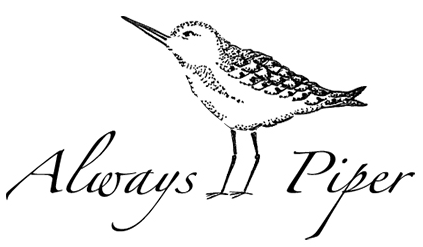 Timeless clothing, bedlinens,, home goods and accessories made mostly from linen. “Outstanding quality is achieved through fine detailing and finishes that result in items that are exclusive and promise to last for years…handmade on the coast of Maine in small batches.”
Timeless clothing, bedlinens,, home goods and accessories made mostly from linen. “Outstanding quality is achieved through fine detailing and finishes that result in items that are exclusive and promise to last for years…handmade on the coast of Maine in small batches.”
Toockies
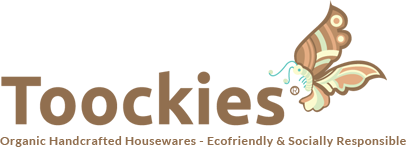 Handcrafted housewares made from certified organic cotton using vintage patterns: pot holders, coasters, wash cloths, scrub clothes. “As a young girl I lived in a small fishing village on an island in the Azores. My mother had very few opportunities to make money because culturally she was expected to stay home and provide free labor to support the family. Her only source of income was embroidery…When I married and became a homemaker myself, my mother-in-law introduced me to knitted dishcloths she received from her cousin Claudia, better known as “Toockie”. I very quickly became dependent on these “Toockies” to clean my home, my kids and my car. Soon I started thinking everybody should have these amazing Toockies® that lasted for years because they out performed most of the disposable cleaning products I had to keep buying every month…I began to think about how I might start a home business, with the help of women who could use a bit of extra money like my mom did…”
Handcrafted housewares made from certified organic cotton using vintage patterns: pot holders, coasters, wash cloths, scrub clothes. “As a young girl I lived in a small fishing village on an island in the Azores. My mother had very few opportunities to make money because culturally she was expected to stay home and provide free labor to support the family. Her only source of income was embroidery…When I married and became a homemaker myself, my mother-in-law introduced me to knitted dishcloths she received from her cousin Claudia, better known as “Toockie”. I very quickly became dependent on these “Toockies” to clean my home, my kids and my car. Soon I started thinking everybody should have these amazing Toockies® that lasted for years because they out performed most of the disposable cleaning products I had to keep buying every month…I began to think about how I might start a home business, with the help of women who could use a bit of extra money like my mom did…”
All Good Things Organic Seeds
Hundreds of certified organic, non-GMO vegetable, flower and herb seeds, including improved rare and heirloom varieties sourced directly from their farm in Ojai, California. Seeds you won’t find elsewhere. Their mission is to propagate plant biodiversity and improve existing open-pollinated and heirloom vegetable varieties for better performance in organic farming and gardening contexts. “We are motivated by a curiosity and for the sensuous world and its panoply of colors, textures and flavors. Sourcing seeds from us allows us to continue this engagement and supports the broader organic food movement. “ Be sure to see the gorgeous photos in their blog.
Cafe Mam
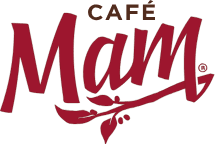 European-grade Arabica coffee—100% organic, 100% fair-trade, shade grown, fresh roasted. The coffee is grown by fair trade cooperatives of native Mayan farmers living in the highlands of Chiapas, Mexico and Guatemala. The farmers believe that by taking care of the soil, they are taking care of the entire biosystem. Though this site sells only one type of bean, you can select a level of caffeine, a particular roast, and your preferred grind (and all are explained on the site). Half-pound sample bag is only $5.25.
European-grade Arabica coffee—100% organic, 100% fair-trade, shade grown, fresh roasted. The coffee is grown by fair trade cooperatives of native Mayan farmers living in the highlands of Chiapas, Mexico and Guatemala. The farmers believe that by taking care of the soil, they are taking care of the entire biosystem. Though this site sells only one type of bean, you can select a level of caffeine, a particular roast, and your preferred grind (and all are explained on the site). Half-pound sample bag is only $5.25.
Maine Made Bedrooms
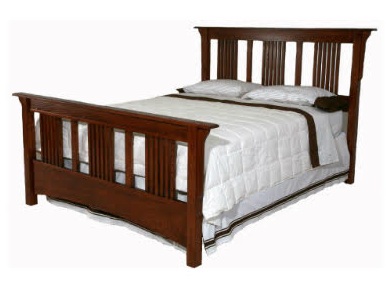 Bed frames and bedroom furniture in classic styles, made from American ash, with water-based finish or unfinished. The only other material used is a water-based nontoxic glue. NOTE: Only their Maine Made Bedrooms line is nontoxic. They also sell other brands.
Bed frames and bedroom furniture in classic styles, made from American ash, with water-based finish or unfinished. The only other material used is a water-based nontoxic glue. NOTE: Only their Maine Made Bedrooms line is nontoxic. They also sell other brands.
Maine Bunk Beds
Sturdy, real hardwood bunk beds made from nontoxic materials with kid-friendly colors and designs. “While many furniture companies use softer, less durable woods like pine, we use poplar—a high-quality, sustainable, locally sourced, renewable hardwood…Except for the architectural bolts used to attach the rails to the corner frames we don’t use any metal in our beds: no wood screws, no metal plates, and no braces or angles used to artificially reinforce inferior products. We never use particle board or composite material in our beds.” Finishes are my favorites: Old-Fashioned Milk Paint and Vermont Natural Coatings. All of their beds are made to meet your needs and aesthetics. They also sell natural mattresses.
Leather vs Fabric Sofa
Question from Lynn
Hi Debra,
I am a mother of three young children attempting to furnish a new home (yikes). My eyes were opened to the toxic chemicals in consumer products when trying to chose a bottle for my first son years ago. I relentlessly read and research the safest/healthiest choices for my family and upon doing so I found your gem of a website!!
I’m having trouble locating any information on chemicals in leather couches. IE: what am i exposing my family to? My question…which would be a safer choice for my family: a leather couch or a fabric couch? Seems simple, but I know there is a lot to consider. Any insight you may have would be greatly appreciated!
Thanks so much!
Debra’s Answer
All the information you are looking for regarding both leather and fabric sofas can be found at oecotextiles.wordpress.com
Here are their posts about leather: oecotextiles.wordpress.com/category/leather.
Other materials and related issues can be found in their very detailed menu on the right side of every page.
These articles are pretty long and detailed, and a lot of the information has to do with environmental effects in addition to direct health effects.
The simplified story is that tanning leather involves about 250 chemicals, including formaldehyde. You can easily smell these chemicals in a new sofa and they outgas for a long time.
A fabric sofa usually is made of synthetic fabric, polyurethane foam, and may have fire retardants and stan repellants (which outgas formaldehyde).
You can purchase all-natural sofas from the sellers on the Furniture page of Debra’s List.
If you can’t afford this, another alternative is to get a futon and put it in a sofa converter frame, such as this one from White Lotus Home.
Toxins of Dawn Dish Detergent
Question from Marie
Hi Debra,
Hi. I looked on Q&A first, but didn’t see anything.
How do I tell a friend that her fragranced Dawn dish detergent is toxic? (It smelled up her kitchen and contaminated my clothes and hair.) Is there a list somewhere of its chemicals that I can email her?
Thank you very much
Debra’s Answer
You can find all the ingredients for all Dawn products here: www.pg.com/productsafety/search_results.php?searchtext=Dawn&category=ingredients&submit=Search
There are fifteen Dawn products, so choose the one that matches your friend’s.
Choose “ingredients” (pdf) under the product name and you will get something that looks like this: www.pg.com/productsafety/ingredients/household_care/dish_washing/Dawn/Ultra_Dawn_Original_Lemon_Dishwashing_Ingredient_Disclosure.pdf
After the Fragrance ingredient, there is another link that says “For more information, follow this link”. And it goes here: www.pgproductsafety.com/productsafety/ingredients/Perfume_and_Scents.pdf
Everyone take a look at this. They tell you all the chemicals that may be present in their fragrance. But no data on toxicity. This is the list of chemicals you are looking for.
I need to start a new project of looking up all these chemicals.
EnviroKlenz HVAC Filter
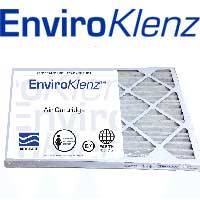 The EnviroKlenz HVAC Filter is specifically designed to remove odors and chemical pollutants from air spaces in the home. It was inspired by the special needs of people with Multiple Chemical Sensitivities (MCS), who require a home environment as free from toxic chemicals as possible. This technology captures and destroys chemicals and odors for true elimination.A unique and advanced manufacturing process greatly enhances the beneficial neutralizing properties of the earth minerals and retain their natural safety characteristics. The earth minerals may include Magnesium Oxide (MgO), Zinc Oxide (ZnO), and Titanium Dioxide (TiO2). For a 10% discount on your entire purchase, enter coupon code “toxicfree10” at checkout.
The EnviroKlenz HVAC Filter is specifically designed to remove odors and chemical pollutants from air spaces in the home. It was inspired by the special needs of people with Multiple Chemical Sensitivities (MCS), who require a home environment as free from toxic chemicals as possible. This technology captures and destroys chemicals and odors for true elimination.A unique and advanced manufacturing process greatly enhances the beneficial neutralizing properties of the earth minerals and retain their natural safety characteristics. The earth minerals may include Magnesium Oxide (MgO), Zinc Oxide (ZnO), and Titanium Dioxide (TiO2). For a 10% discount on your entire purchase, enter coupon code “toxicfree10” at checkout.
Pizza Box Chemicals No Longer Allowed by FDA
You’ve probably already heard in the news that three chemicals used as oil repellants in pizza boxes, microwavable popcorn bags, fast-food wrappers and pet food bags to stop grease from leaking through the packaging have now been banned for use by the FDA.
These chemicals are related to perfluorooctanoic acids, or PFOAs, which have been connected to thyroid disease, ulcerative colitis, and preeclampsia, a potentially life-threatening high blood pressure in pregnant women.
The good news is that PFOAs have already been being phased out for some time. They were typically found in non-stick coatings on pots and pans, but are now being replaced with “PFOA-free” coatings. Likewise, these chemicals have been disappearing from food packaging as well.
I wanted to share this story with you because it’s a good example of how change is made. This change is the result of a petition filed in 2010 by the Natural Resources Defense Council, the Center for Food Safety, the Breast Cancer Fund, the Center for Environmental Health, Clean Water Action, the Center for Science in the Public Interest, Children’s Environmental Health Network, Environmental Working Group, and Improving Kids’ Environment. These groups made it known there was a danger. By the time the FDA banned these chemicals, they had already been phased out by industry.
We can do this with other chemicals too. This is why we should be supporting these groups and others like them.
Here are some excerpts from the official FDA announcement.
On 4 January 2016 the Food and Drug Administration (FDA) issued a ruling amending the food additive regulations to no longer provide for the use of three specific perfluoroalkyl ethyl containing food-contact substances (FCSs) as oil and water repellants for paper and paperboard for use in contact with aqueous and fatty foods because new data are available as to the toxicity of substances structurally similar to these compounds that demonstrate there is no longer a reasonable certainty of no harm from the food-contact use of these FCSs.
The three FCSs which are the subjects of this petition are:
- Diethanolamine salts of mono- and bis (1 H, 1 H, 2 H, 2 H perfluoroalkyl) phosphates where the alkyl group is even-numbered in the range C8-C18 and the salts have a fluorine content of 52.4 percent to 54.4 percent as determined on a solids basis;
-
Pentanoic acid, 4,4-bis [(gamma-omega-perfluoro-C8-20-alkyl)thio] derivatives, compounds with diethanolamine (CAS Reg. No. 71608-61-2); and
-
Perfluoroalkyl substituted phosphate ester acids, ammonium salts formed by the reaction of 2,2-bis[([gamma], [omega]-perfluoro C4-20 alkylthio) methyl]-1,3-propanediol, polyphosphoric acid and ammonium hydroxide.
All three of the FCSs subject to the petition contain extended alkyl chains where all of the hydrogens are replaced by fluorine (hence the FCSs are “perfluorinated”). The toxicological profile of extended perfluorinated alkyl chains varies with chain length: On a general basis, those with extended perfluorinated alkyl chains greater than or equal to eight carbons in length demonstrate biopersistence in chronic feeding studies, while those with extended perfluorinated alkyl chains less than eight carbons in length do not (Ref. 1). Biopersistence is defined as persistence and accumulation of a material in a biological tissue due to preferential deposition of the material in the tissue combined with resistance of the material to removal from the tissue by natural clearance mechanisms (Ref. 2). As such, compounds containing extended perfluorinated alkyl chains are often classified as long- (i.e., ≥ eight carbons in length) or short-chain perfluorinated compounds, with implications for toxicology analysis including consideration of biopersistence. All three of the FCSs contain extended perfluorinated alkyl chains ≥ eight carbons in length and as such are long-chain perfluorinated compounds (PFCs).






